Blog
Changwen is a leading cooking utensils manufacturers. We supply high quality stainless steel cooking pots and pans to all over the world. We can also customize the local hot-selling stainless steel pots and pans. Please send your requirements to Changwen.
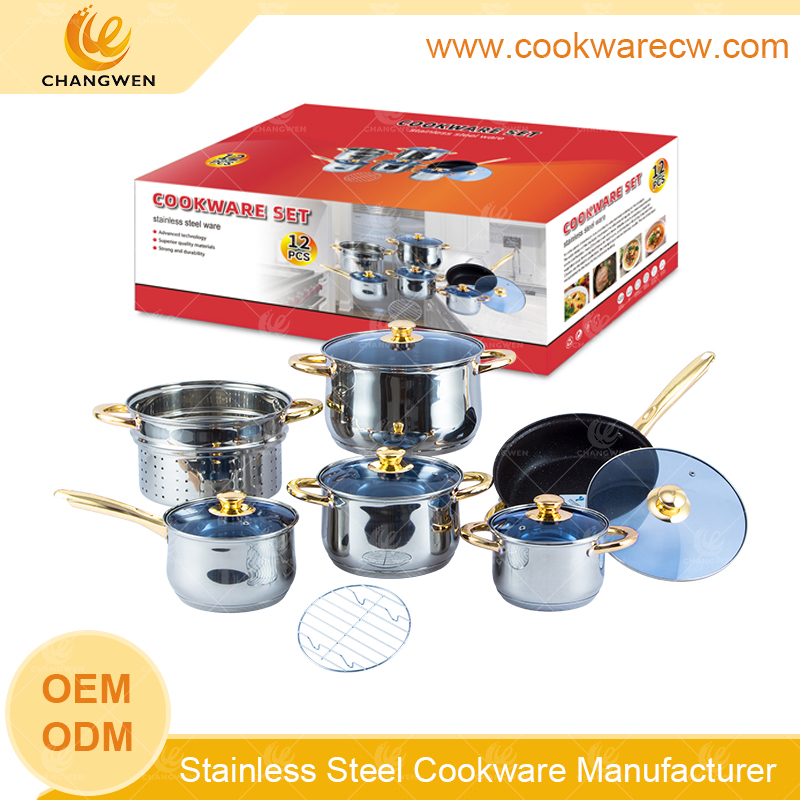
How to turn a stainless steel frying pan into a non-stick frying pan. Introduction to the tips for using stainless steel frying pans
I already have a stainless steel frying pan at home. When I don’t want to buy another non-stick frying pan, I want to use the stainless steel frying pan as a non-stick. However, stainless steel pots are not completely non-stick. Changwen Cookware Manufacturer tells you how stainless steel frying pans can be used physically. Not sexually involved.
The method to turn a stainless steel frying pan into a non-stick frying pan is through physical processing. The following are detailed steps:
Cleaning with white vinegar: Pour an appropriate amount of white vinegar into a stainless steel pot and heat until nearly boiling. After turning off the heat, use a brush to evenly scrub the inner surface of the pot with boiling white vinegar to remove oil and impurities. After cleaning, pour away the white vinegar and rinse with clean water.
High-temperature heat treatment: Heat the pot over high heat. After all the water droplets have evaporated, continue heating for a while to make sure the pot is very hot. This step helps open the pores on the surface of the pot.
Add cooking oil: After turning to medium-low heat, pour in an appropriate amount of cooking oil. Shake and rotate the pot constantly to make sure the inner surface of the pot is evenly coated with oil. Let the oil sit in the pan for two to three minutes to allow the pores on the surface of the pan to absorb the oil.
Use pig rinds or lard rinds: If you have a fully fattened pig rind with grease, you can use it to wipe the pan. Slowly rub the lard skin onto the pot body and allow the surface of the pot to absorb the oil. This process lasts for about half an hour until the pot body is shiny.
Pre-treatment before frying: Before frying, heat the cooking oil in the pot over medium-low heat for about two minutes to ensure that the oil temperature is moderate. Move the pot around so that the oil evenly adheres to the inner surface of the pot. Next, fry or stir-fry as you normally would.
With these steps, you can convert a stainless steel frying pan into a non-stick frying pan, making cooking more convenient and effective.
JIANGMEN CHANGWEN COOKWARE & KITCHENWARE CO., LTD. is a high-tech enterprise integrating the research and development, manufacturing, export trade and independent brand sales of stainless steel cookware. Its products are exported to more than 100 countries and regions including Europe and the United States, and it is one of the world’s important suppliers of stainless steel products. Please feel free to contact us if you need anything!
Popular Blog
How to judge the quality of your stainless steel pot?
Essential Cookware Pieces Featured by Mexican Manufacturers
What should we know when using a stainless steel wok?
Choosing the Ideal Material for Woks: Iron or Stainless Steel?
How to choose a stainless steel steamer pot?
What Are The Best Stainless Steel Utensils?
Are stainless steel pots really rust-free?
The Correct Ways to Use Stainless Steel Pots and Its Precautions
Tags
Recommend Products
-
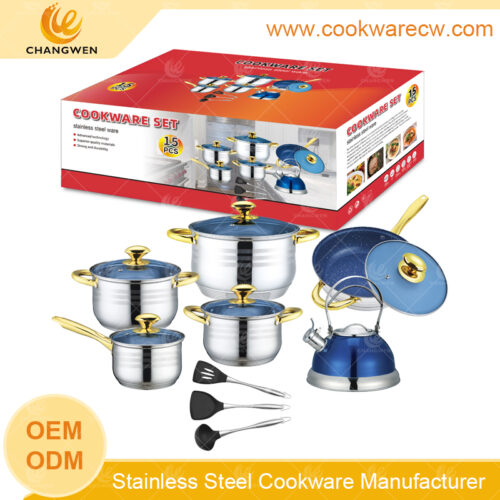
Stainless steel cookware 15pcs cooking sets blue marble nonstick fry pan golden plated handles and knobs capsule bottom 3L whistling tea kettle kitchen tools CW52001-15
-
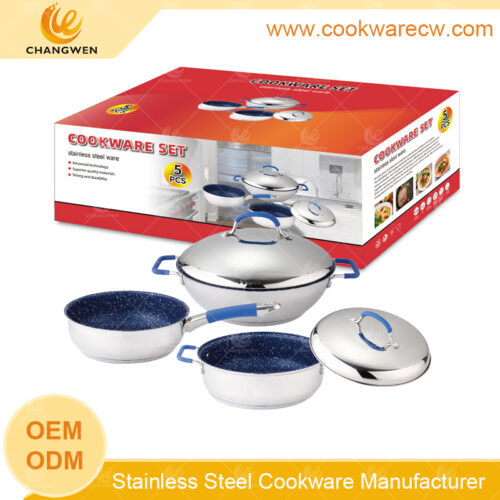
non-stick fry pans coating wok stainless steel wire handles & knobs with silicon cover high quality material lid CW52016-5-1
-
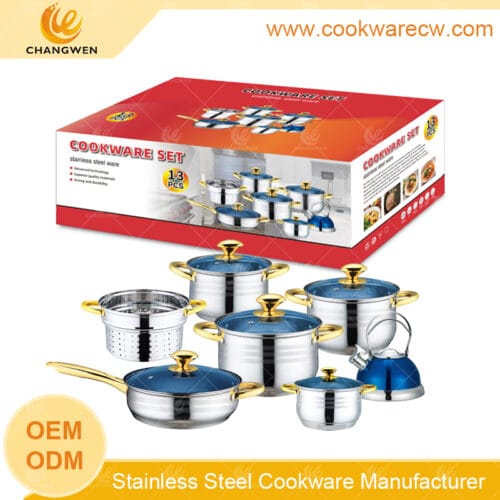
Mercado Libre stainless steel 13pcs cookware set tea kettle pasta pot nonstick frying pan golden handle blue coating CW52002-13N2
-
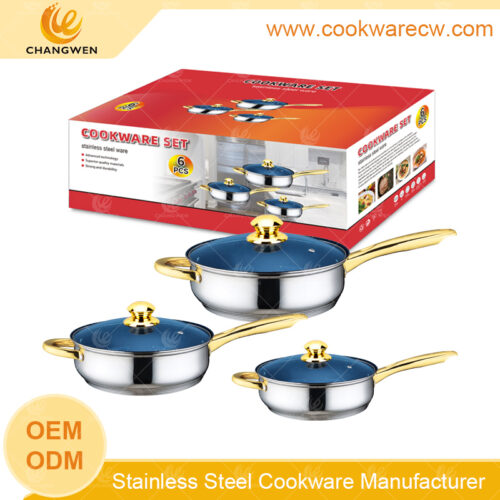
Wholesale new design stainless steel cookware 3pcs blue marble coating nonstick frypan set golden handles and knobs adjustable size CW52016-6
-
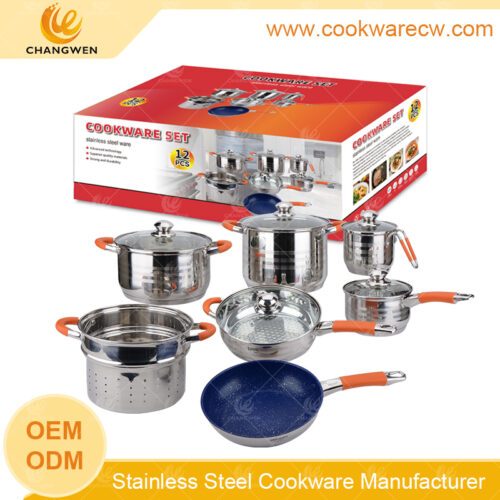
12pcs stainless steel cookware set with silicon handles coating conic frypan 24cm pasta pot in China CW52004-12N
-
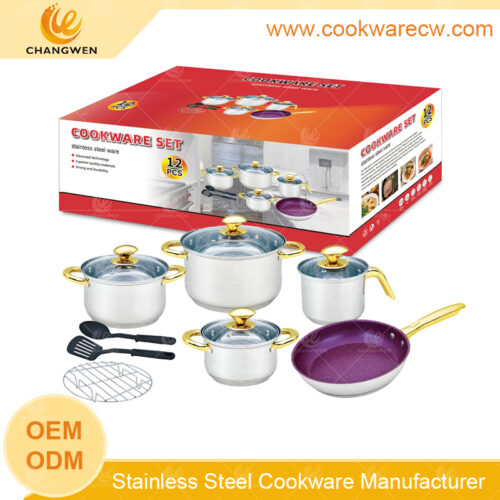
Cookware wholesaler 12pcs pots and pans stainless steel cooking sets kitchenware tools and steamer CW52001-12N4
-
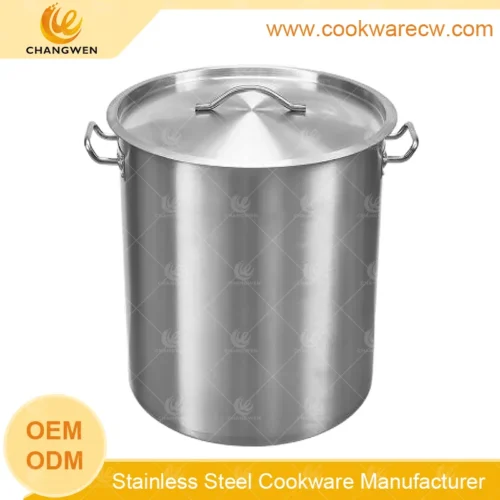
Commercial Stainless Steel Stock Pot CW-S032-2
-
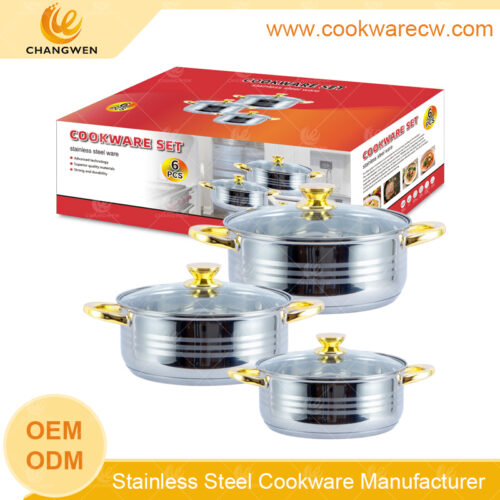
Factory wholesale stainless steel rice cooker induction shallow pot with capsule bottom 6pcs short pots with glass lid and golden handles CW52003-6
